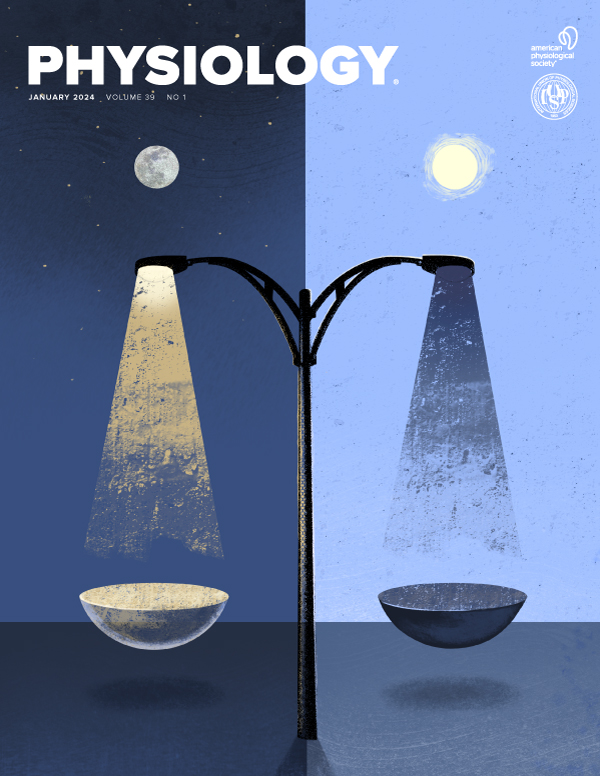Neuro-inflammatory interactions as a mediator of the Exaggerated Exercise Pressor Reflex (EPR) in a mouse model of Peripheral Artery Disease
IF 5.3
2区 医学
Q1 PHYSIOLOGY
引用次数: 0
Abstract
Introduction and rationale: The Exercise pressor reflex (EPR) is a physiological mechanism in which the contraction of skeletal muscle results in a rise in heart rate (HR) and mean arterial pressure (MAP). In patients with Peripheral Artery Disease (PAD), this reflex is exaggerated, leading to abnormally high elevations in blood pressure during exercise. These cardiovascular responses in patients with PAD have been linked to increased morbidity and mortality, thus limiting the prescription of exercise for these patients. Using a novel murine model of the EPR, our laboratory has demonstrated that mice with femoral artery ligation (a well-established model of PAD), exhibit augmented increases in MAP which is mediated by PIEZO2 positive, mechanosensitive afferent neurons. We have demonstrated that inhibition of PIEZO2 expressing channels normalizes the MAP response to exercise. Patients with PAD also display increased macrophage infiltration in their ischemia-injured limbs, indicating a pro-inflammatory environment. Sensory neurons have been reported to detect various signals produced by immune cells including IL-1β and TNFα. The immune-derived signals can sensitize the peripheral terminals of the sensory neurons, thereby reducing their firing threshold and increasing their responsiveness. Previous studies have also reported the enhancement of Piezo2-mediated mechanosensitive currents in the presence of inflammatory signals. Hypothesis: We, therefore, hypothesize that in mice with femoral artery ligation, muscle inflammation increases the expression and activation of resident ion channels (e.g., Piezo2) in mechanosensitive afferent neurons to mediate the exaggerated EPR in PAD.Study objective: To mechanistically investigate the interaction between muscle inflammation and Piezo2 in mechanosensitive afferent neurons.Methods: We performed sham surgery or ligation of the femoral artery ipsilaterally in C57BL/6 mice. After 72 hours, we harvested the gastrocnemius muscle for histological and molecular analyses.Data and summary and results: Our preliminary findings reveal that there is significantly increased expression of pro-inflammatory genes and infiltrating immune cells in the ischemic muscle when compared to non-ischemic muscle.Specifically, H&E staining revealed the presence and accumulation of inflammatory cells, including macrophages, in the ischemic muscle compared to control, along with observed necrosis. Transcript analysis of the ischemic gastrocnemius muscle showed significantly increased IL-1β and TNFα, two pan-proinflammatory genes that encode cytokines released by macrophages. TNFα is known to induce the synthesis of adhesion molecules (E-selectin and ICAM-1) on endothelial cells, allowing leukocytes to adhere and cross the endothelial wall into the injured tissue. Indeed, we observed significantly increased ICAM-1 and E-selectin transcripts in the ischemic muscle compared to controls. MCP1, a well-established chemokine, was also significantly increased, further emphasizing the recruitment of leukocytes to the ischemic muscle. In addition, inducible NOS ( iNOS), which is known to be expressed in IL-1β- and TNFα-rich proinflammatory environment was also significantly increased in our FAL model compared to Sham. These data establish that the ischemic muscle of a femoral-artery ligated mouse has a high proinflammatory phenotype. We are currently exploring the impact of proinflammatory mediators on Piezo2 channel expression and activity, as well as the effect of macrophage depletion on Piezo2 in afferent neurons. The data from these studies will provide novel insights regarding the influence of neuroimmune interactions on cardiovascular responses to exercise in PAD. These data hold the potential to reveal innovative therapies enabling safe prescription of exercise, thus alleviating the burden of PAD, and improving the quality of life for those affected by this condition. Internal sources. This is the full abstract presented at the American Physiology Summit 2024 meeting and is only available in HTML format. There are no additional versions or additional content available for this abstract. Physiology was not involved in the peer review process.神经炎症相互作用是外周动脉疾病小鼠模型中运动加压反射(EPR)加剧的介质
导言和理由:运动加压反射(EPR)是骨骼肌收缩导致心率(HR)和平均动脉压(MAP)上升的一种生理机制。外周动脉疾病(PAD)患者的这种反射会被夸大,导致运动时血压异常升高。PAD 患者的这些心血管反应与发病率和死亡率的增加有关,因此限制了这些患者的运动处方。我们的实验室利用一种新型的小鼠 EPR 模型证明,股动脉结扎小鼠(一种成熟的 PAD 模型)会表现出 MAP 的增强性升高,这种升高是由 PIEZO2 阳性、机械敏感性传入神经元介导的。我们已经证明,抑制 PIEZO2 表达通道可使运动时的 MAP 反应正常化。PAD 患者缺血损伤的肢体中巨噬细胞浸润也有所增加,这表明存在一种促炎环境。据报道,感觉神经元能检测到免疫细胞产生的各种信号,包括 IL-1β 和 TNFα。免疫信号可使感觉神经元的外周终端敏化,从而降低其发射阈值并提高其反应性。以前的研究也曾报道,在炎症信号存在的情况下,Piezo2-介导的机械敏感电流会增强。假设因此,我们假设,在股动脉结扎的小鼠中,肌肉炎症会增加机械敏感传入神经元中常驻离子通道(如 Piezo2)的表达和激活,从而介导 PAD 中夸张的 EPR:研究目的:从机理上研究肌肉炎症与机械敏感传入神经元中 Piezo2 之间的相互作用:方法:我们对 C57BL/6 小鼠进行假手术或同侧股动脉结扎。72小时后,我们采集腓肠肌进行组织学和分子分析:我们的初步研究结果表明,与非缺血肌肉相比,缺血肌肉中促炎症基因和浸润免疫细胞的表达明显增加。具体而言,H&E 染色显示,与对照组相比,缺血肌肉中存在和积聚炎症细胞,包括巨噬细胞,同时还观察到坏死。对缺血腓肠肌的转录本分析表明,IL-1β和TNFα这两种泛炎基因显著增加,它们编码巨噬细胞释放的细胞因子。已知 TNFα 能诱导内皮细胞上粘附分子(E-选择素和 ICAM-1)的合成,使白细胞粘附并穿过内皮壁进入损伤组织。事实上,与对照组相比,我们观察到缺血肌肉中的 ICAM-1 和 E-selectin 转录物明显增加。MCP1是一种公认的趋化因子,也明显增加,进一步强调了缺血肌肉中白细胞的招募。此外,在富含 IL-1β 和 TNFα 的促炎环境中表达的诱导性 NOS(iNOS)在 FAL 模型中也比 Sham 模型明显增加。这些数据证实,股动脉结扎小鼠的缺血肌肉具有高度的促炎表型。我们目前正在探索促炎介质对 Piezo2 通道表达和活性的影响,以及巨噬细胞耗竭对传入神经元中 Piezo2 的影响。这些研究数据将为我们提供有关神经免疫相互作用对 PAD 运动心血管反应影响的新见解。这些数据有可能揭示出创新疗法,使运动处方安全可靠,从而减轻 PAD 的负担,改善受此疾病影响者的生活质量。内部资料。本文是在 2024 年美国生理学峰会上发表的摘要全文,仅提供 HTML 格式。本摘要没有其他版本或附加内容。生理学》未参与同行评审过程。
本文章由计算机程序翻译,如有差异,请以英文原文为准。
求助全文
约1分钟内获得全文
求助全文
来源期刊

Physiology
医学-生理学
CiteScore
14.50
自引率
0.00%
发文量
37
期刊介绍:
Physiology journal features meticulously crafted review articles penned by esteemed leaders in their respective fields. These articles undergo rigorous peer review and showcase the forefront of cutting-edge advances across various domains of physiology. Our Editorial Board, comprised of distinguished leaders in the broad spectrum of physiology, convenes annually to deliberate and recommend pioneering topics for review articles, as well as select the most suitable scientists to author these articles. Join us in exploring the forefront of physiological research and innovation.
文献相关原料
| 公司名称 | 产品信息 | 采购帮参考价格 |
|---|
 求助内容:
求助内容: 应助结果提醒方式:
应助结果提醒方式:


